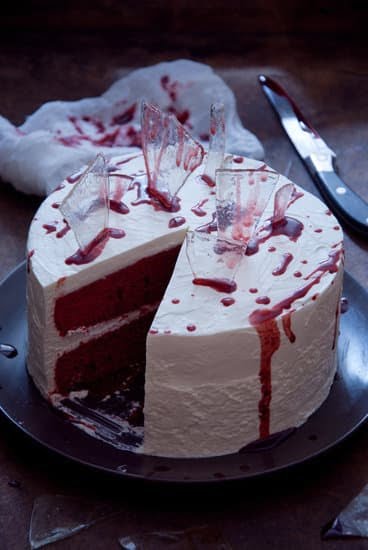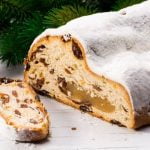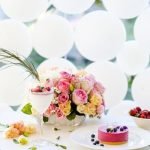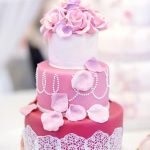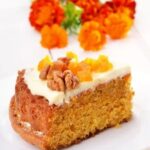Are you a beginner in the kitchen looking to impress your friends and family with a delicious and beautifully decorated cake? In this comprehensive guide, we will walk you through the process of baking and decorating a cake from scratch.
Whether you’re celebrating a special occasion or simply want to hone your baking skills, learning how to bake and decorate a cake is a rewarding skill that will bring joy to both you and those who get to enjoy your creations.
Baking and decorating a cake is not only a fun and creative activity, but it also allows you to experiment with different flavors, textures, and designs. As a beginner, mastering the art of baking and decorating a cake will give you a sense of accomplishment and satisfaction as you watch your finished masterpiece come together. Plus, being able to whip up an impressive homemade cake is always handy for celebrations or last-minute dessert requests.
In this article, we’ll cover everything you need to know to get started on your cake baking and decorating journey. From essential tools and ingredients to choosing the right recipe, step-by-step instructions for baking, basic decorating techniques, decorating ideas, and expert tips for success – we’ve got you covered. So let’s roll up our sleeves, preheat that oven, and get ready to create some delectable cakes.
Essential Baking Tools and Ingredients
Baking a cake from scratch can be an enjoyable and rewarding experience, especially for beginners. To ensure success in your cake-making endeavors, it is essential to have the right tools and ingredients at your disposal. Whether you are new to baking or looking to brush up on your skills, having a comprehensive list of essential baking tools and ingredients is crucial.
When it comes to baking tools, some must-haves include mixing bowls, measuring cups and spoons, a stand mixer or hand mixer, rubber spatula, and a whisk. Additionally, having round cake pans, parchment paper, and a cooling rack are also important for creating the perfect cake layers. As for ingredients, basic items such as all-purpose flour, sugar, eggs, butter or oil, baking powder and soda, vanilla extract, and salt are necessary for most cake recipes.
When stocking up on tools and ingredients for baking a cake as a beginner, it’s important to invest in quality items that will make the process easier and more enjoyable. Having these essential tools and ingredients on hand will set you up for success as you embark on your journey of learning how to bake and decorate a cake for beginners.
In addition to having the right tools and ingredients for baking a cake from scratch, it’s also important to take into consideration the quality of the items you use. Using high-quality ingredients such as pure vanilla extract instead of imitation vanilla flavoring can make a noticeable difference in the taste of your cake. Likewise, investing in sturdy mixing bowls and reliable measuring cups will make the process of baking a cake much smoother.
As you gather your essential baking tools and ingredients for creating delicious cakes from scratch as a beginner baker, don’t be afraid to experiment with different brands or types of products to find what works best for you. With practice and the right tools at your disposal you can master the art of baking and decorating beautiful cakes in no time.
Choosing the Right Cake Recipe
When it comes to baking and decorating a cake for beginners, selecting the right recipe is crucial. Choosing a simple and easy cake recipe can make the entire process more enjoyable and less intimidating. Here are some tips on how to select the perfect cake recipe for beginners.
Consider Your Baking Experience
If you are new to baking, it’s important to choose a recipe that matches your skill level. Look for recipes labeled as “beginner-friendly” or “easy.” These recipes often have fewer steps and require basic ingredients and tools, making them perfect for those just starting out in baking.
Choose a Classic Flavor
When selecting a cake recipe, consider choosing a classic flavor such as vanilla, chocolate, or lemon. These flavors are not only universally loved but also tend to have straightforward recipes with minimal ingredients. Starting with a classic flavor will allow you to focus on mastering the basic techniques of cake baking and decorating.
Read Reviews and Ratings
Before settling on a specific cake recipe, take the time to read reviews and ratings from other bakers. Websites and cookbooks often feature user reviews that can provide valuable insight into the ease of following the recipe and the quality of the final product. Look for recipes that have positive feedback from fellow beginners to increase your chances of success.
By following these tips, beginners can confidently select a simple and easy cake recipe that will set them up for success in their baking and decorating journey. Remember, choosing the right cake recipe is the first step towards creating delicious and stunning cakes from scratch.
Step-by-Step Baking Instructions
Baking a cake from scratch can be a fun and rewarding experience, especially for beginners. By following some simple step-by-step instructions, you can create a delicious homemade cake that will impress your friends and family. In this section, we will provide detailed guidance on how to bake a cake from scratch, including mixing the batter, baking the cake, and testing for doneness.
First, you will need to gather all the necessary ingredients and tools for your chosen cake recipe. This may include flour, sugar, eggs, baking powder, butter, vanilla extract, and any additional flavorings or mix-ins. You will also need measuring cups and spoons, mixing bowls, a whisk or electric mixer, and cake pans. It’s important to make sure you have everything on hand before getting started.
Once you have all your ingredients and tools ready, you can begin by preheating your oven to the specified temperature in the recipe. Then, you’ll want to prepare your cake pans by greasing them with butter or oil and dusting them with flour to prevent the cake from sticking.
Next, you can start mixing your batter according to the recipe instructions. Typically, this involves creaming together the butter and sugar, adding the eggs and dry ingredients alternately with the wet ingredients (such as milk or buttermilk), and then stirring in any additional flavorings or mix-ins.
After mixing the batter thoroughly until smooth and well-combined, carefully pour it into your prepared cake pans and place them in the oven. Bake the cakes for the specified amount of time in the recipe until they are golden brown and spring back when lightly touched.
To test for doneness, insert a toothpick into the center of each cake – if it comes out clean with no batter sticking to it, your cakes are ready. Remove them from the oven and allow them to cool completely before moving on to decorating.
| Essential Baking Tools | Ingredients |
|---|---|
| Measuring cups & spoons | Flour |
| Mixing bowls | Sugar |
| Whisk or electric mixer | Eggs |
| Cake pans | Baking powder |
Basic Cake Decorating Techniques
When it comes to baking and decorating a cake for beginners, mastering some basic decorating techniques is essential. Learning how to ice a cake smoothly and use piping bags can take your homemade cakes to the next level, making them look and taste like they came from a professional bakery. Here’s a guide to get you started on mastering these fundamental cake decorating skills.
Mastering the Art of Icing
The first step in decorating a cake is learning how to ice it properly. Start with a crumb coat, which is a thin layer of frosting that seals in any loose crumbs and provides a smooth base for the final layer of icing.
Once your crumb coat is set, you can apply the final layer of icing using an offset spatula. Spread the icing evenly over the top and sides of the cake, smoothing it out as much as possible for a polished finish.
Using Piping Bags for Decoration
Piping bags are versatile tools that can be used to create intricate designs and add decorative elements to your cakes. To get started with piping, fill a piping bag with icing and twist the open end closed.
Hold the bag at a 45-degree angle to the surface of the cake, applying gentle pressure to pipe out your desired design or border. Practice different piping techniques such as rosettes, stars, shells, or simple writing to add professional-looking details to your cakes.
With these basic techniques mastered, you’ll be well on your way to creating beautiful and delicious cakes at home. Whether you’re celebrating a special occasion or simply indulging in some sweet treats, knowing how to bake and decorate a cake for beginners will definitely impress your friends and family.
Decorating Tools and Supplies
When it comes to decorating a cake, having the right tools and supplies is essential for creating beautiful and professional-looking designs. Whether you are a beginner or have some experience in cake decorating, having the right equipment can make all the difference in the final result. Here is a list of essential decorating tools and supplies needed to decorate a cake:
- Offset Spatula: An offset spatula is a must-have tool for spreading frosting and smoothing it out on the cake’s surface.
- Piping Bags and Tips: Piping bags and tips allow for intricate designs and decorative elements such as borders, writing, flowers, and other detailed decorations.
- Turntable: A turntable makes it easier to decorate the sides of the cake evenly and smoothly by allowing you to rotate the cake as you work.
- Bench Scraper: A bench scraper is useful for creating clean edges on the sides of frosted cakes.
- Decorating Comb: This tool gives cakes a professional finish by creating textured patterns on the side of the cake.
In addition to these tools, there are also essential supplies needed for cake decorating. These include a variety of frostings and food colors, fondant or gum paste for sculpting decorations, edible glitters or sprinkles for added flair, as well as any specific embellishments required for your chosen design. It is important to make sure that all equipment used is clean and dry before starting your decorating process.
Having these essential tools and supplies on hand will set you up for success when tackling your first decorated cake. As you gain more experience in baking and decorating, you may find that certain tools become your favorites based on your personal style and preferences. Whether it’s piping delicate swirls or creating complex sugar flower arrangements, having the right tools at your disposal will ensure that your cakes look not only delicious but also visually stunning.
Remember to use quality ingredients; however they should compliment each other making them easy to work with during baking what would be considered as best practice throughout your first attempt into becoming an excellent baker.
Cake Decorating Ideas
Cake decorating is not just about making a delicious cake, but also about creating beautiful and visually appealing designs. For beginners, it can be daunting to come up with creative ideas for cake decorating. However, there are plenty of simple and beginner-friendly decorating designs and styles that can help you create stunning cakes without being overwhelmed.
One easy yet impressive cake decorating idea for beginners is the use of fresh fruits or edible flowers to adorn the top of the cake. This not only adds a pop of color but also a touch of elegance to your creation. Additionally, using chocolate shavings or sprinkles to decorate the sides of the cake can elevate its visual appeal with minimal effort.
Another creative and beginner-friendly cake decorating technique is the use of stencils. Stencils allow you to easily create intricate designs on the surface of your cake using powdered sugar or cocoa powder. This technique is simple yet visually striking, making it perfect for beginners who want to add a decorative touch to their cakes without extensive piping skills.
For those who want to try their hand at piping, simple designs such as polka dots, swirls, or stars can add a fun and whimsical element to your cake. With just a basic piping bag and some buttercream frosting, beginners can practice different piping techniques to create delightful patterns on their cakes.
In summary, there are plenty of creative and beginner-friendly cake decorating ideas that can inspire beginners to take their baked creations to the next level. Whether it’s using fresh fruits, stencils, or basic piping techniques, these ideas are sure to help beginners in creating visually stunning cakes without feeling overwhelmed.
| Cake Decorating Ideas | Difficulty Level |
|---|---|
| Fresh Fruits and Edible Flowers | Easy |
| Chocolate Shavings or Sprinkles | Easy |
| Stencil Designs | Intermediate |
| Piping Techniques (Polka Dots, Swirls, Stars) | Intermediate |
Tips for Success
In conclusion, learning how to bake and decorate a cake for beginners is a valuable skill that opens up endless opportunities for creativity and expression. With the right tools, ingredients, and techniques, anyone can learn to create delicious and visually stunning cakes from scratch. By following a simple cake recipe and mastering basic decorating techniques, beginners can embark on an exciting journey into the world of cake baking and decorating.
One of the most important aspects of successful cake baking and decorating is having the right tools and supplies on hand. From mixing bowls and measuring cups to piping bags and offset spatulas, having the essential equipment makes the process much easier and more enjoyable. Additionally, choosing the right cake recipe is crucial for beginners. Starting with a simple and easy recipe will build confidence and provide a solid foundation for exploring more complex flavors and designs in the future.
Furthermore, incorporating pro tips and troubleshooting advice ensures that beginners can navigate any challenges they may encounter during the baking and decorating process. Whether it’s achieving the perfect consistency for icing or troubleshooting uneven baking, these tips help beginners overcome common issues with ease. Ultimately, with dedication, practice, and a willingness to learn, beginners can master the art of baking and decorating cakes, creating beautiful creations that are as delicious as they are visually appealing.
Frequently Asked Questions
What Do You Need to Start Baking and Decorating Cakes?
To start baking and decorating cakes, you will need basic baking ingredients such as flour, sugar, eggs, and butter. Additionally, you will need cake pans, a mixer, measuring cups and spoons, and a cooling rack.
What Does a Beginner Need for Cake Decorating?
For cake decorating as a beginner, it’s essential to have a good quality turntable to easily frost the cakes. You’ll also need an offset spatula for smoothing frosting, piping bags and tips for creating designs, and of course, food coloring gels for customization.
Can I Teach Myself to Decorate Cakes?
Yes, it is absolutely possible to teach yourself how to decorate cakes. There are numerous resources available online such as tutorials on YouTube or instructional blogs that can provide step-by-step guidance. Practice makes perfect in this creative endeavor!

Welcome to our cake decorating blog! My name is Destiny Flores, and I am the proud owner of a cake decorating business named Cake Karma. Our mission is to provide delicious, beautiful cakes for all occasions. We specialize in creating custom cakes that are tailored specifically to each customer’s individual needs and tastes.

